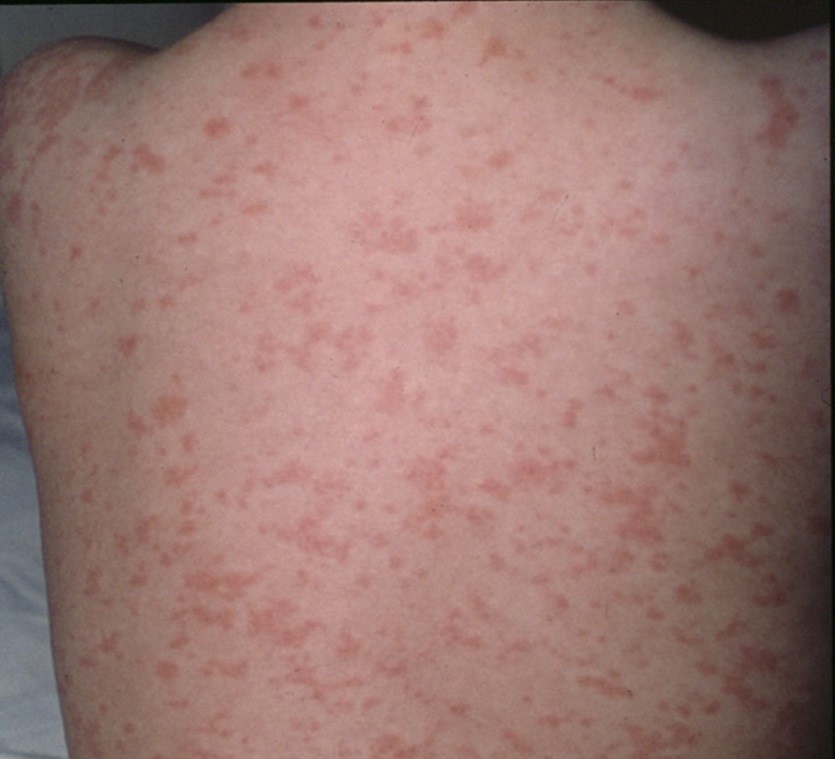Measles is a particularly contagious infectious disease that has been eliminated in Spain for years, meaning that there is no continuous circulation of the virus. However, cases have been increasing in recent years: from 7 in 2023 to 217 in 2024. As of 23 February, 110 cases have already been reported in 2025, which is more than half of the total for the previous year.
‘Most of these cases are occurring in the Basque Country,’ explained Noemí López Perea at a briefing organised by the Science Media Centre Spain, “and some have affected the hospital environment, where transmission is usually higher”. ‘We should not worry the population because the virus is not circulating. Vaccination coverage in Spain is still very high and outbreaks are small from imported cases,’ stressed the researcher from the National Epidemiology Centre-Carlos III Health Institute.
We should not worry the population because the virus is not circulating. Vaccination coverage in Spain is still very high
Noemí López Perea
‘What is more worrying is the global situation,’ added paediatrician Fernando Moraga-Llop, spokesperson and senior member of the Spanish Vaccinology Association (AEV). ‘From 2017 onwards there has been a major re-emergence of measles in the world, and the decrease in vaccination coverage with the pandemic contributed to a 30-fold increase in cases in Europe in 2023 compared to the previous year, according to the WHO. I believe that in Spain we should not be in a situation of alarm, but we should be on alert,’ he said.
Although there are people who are anti-vaccine or reluctant to vaccinate, ‘vaccination coverage in Spain is very good, with percentages of people vaccinated with the first dose [the vaccine has a schedule of two doses] above 95% in recent years’, recalled López Perea. ‘It is true that the first dose has a very good average, 97.8%,’ added Moraga-Llop, ’but there are also 11 communities where the percentage of second doses is below 95% [the target figure]. According to the paediatrician, our coverage ‘is excellent’ when compared with many countries in the rest of Europe.
In Moraga-Llop's opinion, attention should be paid to susceptible groups of people, especially in large cities, because, although the average vaccination rate is very high, in certain areas or neighbourhoods coverage can drop to 50%. For López Perea, ‘these groups exist, but they are small, and the public health services of the communities are capable of identifying them and taking measures according to need’.
In the work of identifying cases, María del Mar Tomás, spokesperson for the Spanish Society of Infectious Diseases and Clinical Microbiology (SEIMC), stressed the importance of molecular diagnosis and of providing adequate information to health professionals. ‘As it is a disease that we considered eradicated, it is possible that they do not have it in their minds when making the differential diagnosis with other infections. It is important for them to know that we have molecular techniques that allow rapid diagnosis and prevent possible spread,’ he explained, as contact studies can be carried out and transmission chains can be cut off.
Given the global situation and the increase in cases, ‘there may be an increase in the number of outbreaks, but this does not have to pose a health risk, nor should we scare the population: we simply have to remind them to comply with their vaccination schedules,’ he added.
Who is most unprotected and should be vaccinated?
In addition to the children targeted by these schedules, should adults also be vaccinated against measles? The vaccine is part of the MMR vaccine, which became part of the Spanish immunisation schedule in 1981. In general, people born before 1970 (because they were infected when the virus was widely circulating) and after 1980 (because they were vaccinated) are considered to be protected. In some communities, vaccination is being recommended for those born between 1970 and 1980 (since 1966 in Catalonia), as they are theoretically the most unprotected - in this decade only a few people were vaccinated and they did so with an earlier, less effective formula.
When asked about this, López Perea explained that there is no campaign as such, but that in some regions these people ‘are being asked and recommended vaccination if necessary in an opportunistic way, when they contact the health system. It is a way of reducing susceptibility. However, according to the measles seroprevalence study -which analyzes the presence of antibodies-, “the most unprotected population is the one born between 1978 and 1987”, so there would be “a general recommendation to vaccinate people born in Spain after 1978 who have no documented vaccination or have not had the disease”.
Moraga-Llop, however, would increase this age group: ‘I would ask those born after 1970 as a precautionary measure’. She also pointed out that the likelihood of complications from measles ‘is greater in adults than in children’.
Finally, although the virus is not circulating in Spain and outbreaks begin with cases imported from other countries with lower vaccination coverage, the experts insisted on the need not to stigmatise. ‘What we must do is identify in order to be able to intervene from the public health point of view,’ stressed López Perea. ‘We should not point the finger at people as responsible for an infection, but as susceptible people.

